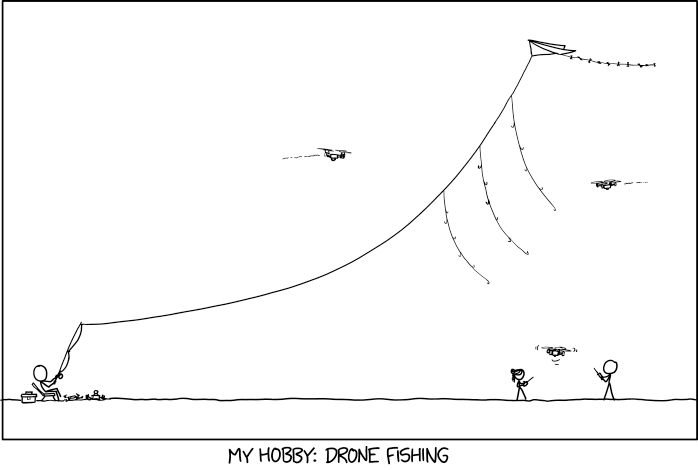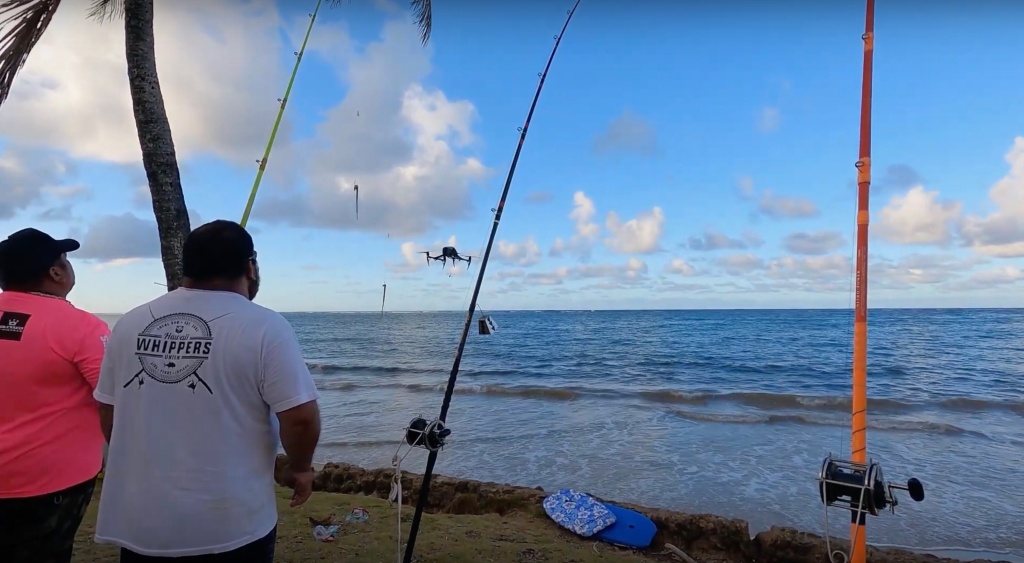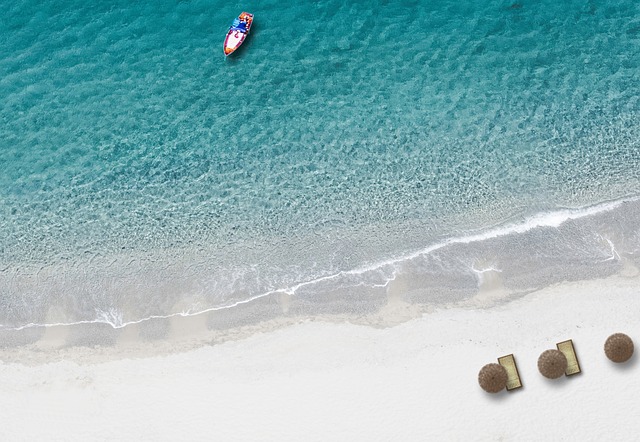
If you are an avid fisherman who lives in Australia, you may be able to use a drone and get an aerial view around the waters. There are many features that drones have, such as a mechanical payload release and an angle adjustable camera, GPS positioning, and a GPS receiver. You can also purchase fishing lines, which are stable and safe. The SKY RIGGER drone is one such example.
SKY RIGGER drone fishing line
The SKY RIGGER is a flexible fishing line system for drones that allows you to fish from the air with minimal effort. The system features two rotating leg clamps that can attach to various drone models. The release mechanism has a bayonet style connection and a camlock arm to quickly open the line clamps. Unlike other drones, the Sky RIGGER requires no batteries and can accommodate all fishing techniques safely.
The SKY RIGGER comes with an automatic release mechanism that allows you to let go of the line when a fish catches your fly. You can also manually release your line with your rod or hand. This feature is included on all models. It is strongly recommended that you first purchase a Phantom 3 before you purchase the new SKY RIGGER. Here are some pros & cons of the new line.
It is equipped with a mechanical payload transfer
A drone with a mechanical payload release system is one of the most important aspects. Many of them make it possible for the anglers easy to release the fishing lines. Some models lack a release mechanism. To release the drone, one must "yank" the fishing lines. This can be awkward, especially for people who don't like using their hands to release line.

The payload release mechanism is another important feature. The payload should be able to release the drone's line when the fish is struck. Before you try this method, it is important that you practice catch-and-release fishing. The fish cannot be pulled to shore and then released back into the water. Many have had positive experiences with the DJI Phantom. But, it is still not as advanced as other fishing drones.
It is equipped with a GPS positioning system
Rippton is a joint Australian and Dutch venture that specializes in technology-oriented fishing products. Its goal is improve anglers' success by creating products that enhance the fishing experience. Rippton’s Mobula drone comes with a GPS position system and remote release. The Mobula is able to hold bait on the surface, resist kite clips and is environmentally friendly.
It is lightweight and weighs just 3 lbs. It can fly for up 18 minutes. It also has a high-tech GPS system, allowing it to be controlled from 2,000 yards away. It has a range of 1000 meters, or half a mile, and is equipped with intelligent flight modes. The point of interest feature allows it to take high-quality photos of its surroundings. You can see great images of fish thanks to its high-resolution digital camera.
It also has an failsafe feature
Aerokontiki's drone fisherman has a failsafe feature. It monitors the battery level, and releases the line when it is needed. It will return to dry ground if it experiences a battery failure and continue its mission. It operates with industrial-grade flightcontrollers, and it can work anywhere without requiring calibration. You can use the drone even in the most treacherous water spots.

FAQ
Traveling with a Drone?
Drones are becoming increasingly popular for both personal use and commercial purposes. They are used for video, filming aerial mapping, search &rescue, and many other purposes. A number of new regulations have been approved by the FAA for drones. These include registration, licensing, pilot training and insurance. These changes will help ensure that drones stay safe for all.
What kind of batteries is a drone using?
The majority of drones use lithium-ion cells. A typical drone uses between 3 and 6 volts.
What laws apply to drones flying above private property?
Recently, the FAA issued new rules regarding commercial drone flight. These rules apply to UAVs with a weight less than 55lbs and that fly at a height of below 400 feet from the ground. Commercial operators need to register with the FAA in order to obtain a license. They will also require permission from local authorities to operate near airports and other restricted areas.
Can my drone be flown around my neighbourhood?
Yes! These are called UAVs (unmanned aircraft vehicles). There are many options for drones, from small quadcopters to larger fixed-wing aircraft. The FAA recently released new rules for commercial UAV use, meaning that they are now legal to fly for business purposes. However, be aware that flying a UAV near airports may cause interference with air traffic control systems, and you must obtain permission from local authorities before operating one.
Where can I find a drone for sale?
Many drones can be purchased online. Some people prefer to buy drones online via Amazon, eBay and Walmart. Others prefer to purchase their drones directly at the manufacturer.
What is the difference of a quadcopter and an hexacopter, you ask?
Quadcopters are four-rotor helicopters that fly like traditional helicopters. It has four rotors that rotate independently. A quadcopter has four rotors. The hexacopter has six. Hexacopters have more stability and maneuverability than quadcopters.
Statistics
- According to industry research from ZipRecruiter , there are 10 cities where the typical salary for a Drone Pilot job is above the national average. (dronesgator.com)
- Research and Markets predict a growth rate of 51.1% over the next five years. (thedroneu.com)
- According to ZipRecruiter, the minimum hourly wage of drone pilots is $20. (thedroneu.com)
External Links
How To
How to Fly Drones for Beginners
A drone can be used to fly remotely controlled aircraft for photography, surveillance, scientific research, hobby and commercial purposes. Drones have been in use since World War II. However, commercial use began in 2010 when DJI released their Phantom series of quadcopters. There have been many types of drones since then, including beginner-friendly drones like the Parrot AR Drone 2.0 and professional-grade multi-rotor crafts like the DJI Mavic Pro.
There are many ways to fly a drone.
-
Remote control – This is when you attach a device to your hand that allows you to control the drone's flight path. There are two types of controllers available: joysticks and on/off switches.
-
Manual Control - This method uses a smartphone app to remotely control the drone using GPS coordinates. You will need to keep track of where the drone is going and follow the directions from the app.
-
Autonomous Flight - This method involves leaving the piloting duties to the drone itself. It is basically flying autonomously and without human intervention. For the autonomous flight to occur, the drone must have a built-in camera and sensors capable of capturing images and data.
-
Triggered Flight: This is similar in concept to manual control. The pilot manually creates a route and the drone then follows it until it reaches that endpoint. Once the programmed route has been completed, the drone returns to the base automatically.
-
Landing Gear: Some drones have landing gear that allows them safely to land in case they lose power or run low on battery.
-
Goggles: Some pilots use goggles in order to protect themselves against debris when operating.
-
Camera - Certain drones come with cameras that allow you to take photos and videos from high above.
-
Obstacles-Some drones come with obstacle avoidance devices that keep them from hitting obstructions.
-
Speed - Some drones can reach speeds of over 40 mph.
-
Battery Life: Most drones have a battery life of between 20 and 30 minutes depending on how many power sources you use.
-
Some drones are capable of traveling up to 30 miles depending upon their make and model.
-
Power source - Some drones need an external power source, while others use internal batteries.
-
Weight - Some drones are lighter than others, while some models can weigh as much as 4 pounds.
-
Size - Drones come in many sizes, from small gadgets that fit in one's hands to large craft that weigh more than 50 lbs.
-
Price - All drones fall within a specific price range, from high-end models that can cost thousands of dollars to lower-cost options starting at $100.